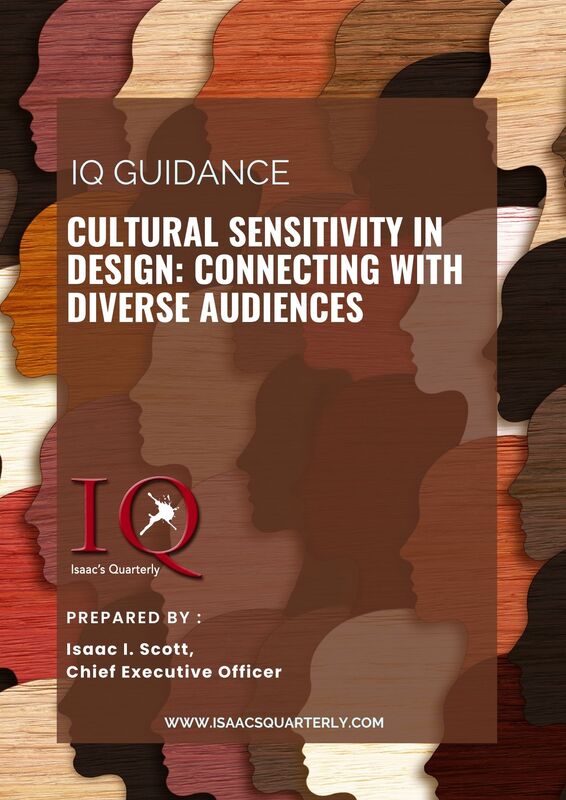|
Cultural Sensitivity in Design - Connecting with Diverse Audiences
Introduction In an increasingly diverse and interconnected world, the importance of cultural sensitivity in design cannot be overstated. This white paper is crafted for businesses and organizations aiming to engage diverse audiences through design. It offers insights into the creation of culturally sensitive visuals that resonate with a wide range of customers, fostering connection and inclusivity. The Significance of Cultural Sensitivity in Design Design plays a pivotal role in shaping perceptions and fostering connections. Harvard Business Review highlights the impact of design on consumer behavior and brand perception (Harvard Business Review, 2020). Cultural sensitivity in design is not merely a trend but a strategic imperative for businesses seeking to build meaningful relationships with diverse audiences. Key Strategies for Culturally Sensitive Design 1. Research and Understanding: Conduct thorough research to understand the cultural nuances of your target audience. The Journal of Design Research emphasizes the importance of cultural research in design processes (Journal of Design Research, 2019). 2. Inclusive Representation: Ensure diverse and inclusive representation in visual content to reflect the richness of different cultures. The Nielsen Norman Group explores the principles of inclusive design (Nielsen Norman Group, 2021). 3. Adaptability and Flexibility: Design visuals that can adapt to different cultural contexts while maintaining core brand identity. The International Journal of Design discusses the adaptability of design in a global context (International Journal of Design, 2017). Case Studies: Successful Implementation of Culturally Sensitive Design 1. Coca-Cola's "Share a Coke" Campaign: Explored by Adweek, Coca-Cola's "Share a Coke" campaign effectively incorporated cultural sensitivity by personalizing labels with diverse names, contributing to global inclusivity (Adweek, 2018). 2. IKEA's Localized Store Designs: Discussed by Forbes, IKEA's localized store designs consider cultural preferences, creating an inclusive shopping experience for diverse customer bases (Forbes, 2021). Additional Resources for Culturally Sensitive Design 1. Harvard Business Review - Impact of Design on Consumer Behavior: Examination of the impact of design on consumer behavior and brand perception (Harvard Business Review, 2020). 2. Journal of Design Research - Cultural Research in Design Processes: Importance of cultural research in design processes (Journal of Design Research, 2019). 3. Nielsen Norman Group - Principles of Inclusive Design: Exploration of the principles of inclusive design, including diverse representation (Nielsen Norman Group, 2021). 4. International Journal of Design - Adaptability of Design in a Global Context: Discussion on the adaptability of design in a global context (International Journal of Design, 2017). Conclusion: Fostering Connection and Inclusivity through Design Cultural sensitivity in design is a strategic imperative for businesses seeking to connect with diverse audiences. By implementing the outlined strategies and drawing inspiration from successful case studies, organizations can create visuals that resonate across cultural boundaries, fostering meaningful connections. References Harvard Business Review. (2020). Impact of design on consumer behavior. Journal of Design Research. (2019). Cultural research in design processes. Nielsen Norman Group. (2021). Principles of inclusive design. International Journal of Design. (2017). Adaptability of design in a global context. Adweek. (2018). Coca-Cola's "Share a Coke" campaign. Forbes. (2021). IKEA's localized store designs. The information provided herein has been compiled based on Isaac Scott's 10 years of art and criminal legal advocacy. While efforts have been made to ensure accuracy, some references from online sources may be unpublished, and certain materials may require subscriptions for full access. Users are encouraged to use the provided references as a starting point and are further encouraged to conduct independent research to verify and expand upon the topics presented. The content is for informational purposes only and should not be construed as legal advice. Readers should consult with qualified professionals for advice on specific legal matters.
0 Comments
Leave a Reply. |

CHIEF EDITOR
ISAAC I. SCOTT,
Five-time Change Agent Award winner, Multimedia Visual Artist, Journalist, and Independent Consultant. Categories
All
Archives |
|
© 2020 Isaac's Quarterly LLC. The images, pictures, and videos on this website are copyrighted and may not be downloaded or reproduced. These materials may be used only for Educational Purposes. They include extracts of copyright works copied under copyright licences. You may not copy or distribute any part of this material to any other person. Where the material is provided to you in electronic format you may download or print from it for your own use, but not for redistribution. You may not download or make a further copy for any other purpose. Failure to comply with the terms of this warning may expose you to legal action for copyright infringement and/or disciplinary action by Isaac's Quarterly LLC.
|
|
|
Follow Isaac's Quarterly on Social Media
|

 RSS Feed
RSS Feed
